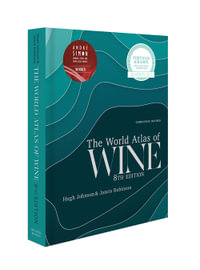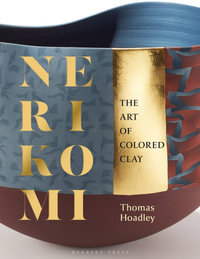| |
| Natural Water | p. 3 |
| Introduction | p. 3 |
| Pure Water | p. 5 |
| Chemical Formula | p. 5 |
| Physical Properties of Water | p. 5 |
| Density | p. 5 |
| Thermodynamic Properties | p. 6 |
| Water-Air System | p. 6 |
| Natural Water | p. 7 |
| Various Natural Waters | p. 7 |
| Impurities of Water | p. 8 |
| Suspended Solids | p. 8 |
| Dissolved Solids | p. 9 |
| Dissolved Gases | p. 10 |
| Analysis of Natural Water | p. 13 |
| Units Chosen | p. 13 |
| Elements Measured and Interpretation of Results | p. 14 |
| Hardness of Water: Titration for Hardness (TH) | p. 15 |
| Alkalinity: Titres | p. 16 |
| Interpretation of Alkalinities | p. 16 |
| Global Interpretation of the Analysis: Ionic Balance and Weight Balance | p. 19 |
| Methods Chosen and Equipment Required | p. 22 |
| Alkalinity | p. 22 |
| Free Mineral Acidity | p. 23 |
| Total Hardness | p. 24 |
| Calcium Hardness | p. 25 |
| Water Treatment | p. 27 |
| Generalities | p. 27 |
| Pretreatment | p. 29 |
| Coarse Screening or Screening | p. 29 |
| Aeration or Oxidation by Air | p. 30 |
| Principle of Aeration | p. 30 |
| Equipment Used | p. 31 |
| Applications of Aeration | p. 31 |
| Chlorination | p. 32 |
| Chlorination Chemistry | p. 33 |
| Other Chlorination Agents | p. 33 |
| Sedimentation or Settling | p. 33 |
| Limitation of the Settling Method | p. 34 |
| Equipment Used | p. 34 |
| Clarification - Coagulation - Flocculation | p. 35 |
| Definition of the Process | p. 35 |
| Coagulation Theory | p. 35 |
| Coagulants Used | p. 36 |
| Use of Organic Flocculants | p. 37 |
| Equipment Used | p. 39 |
| Lime Softening | p. 40 |
| Definition of the Process | p. 40 |
| Equipment Used | p. 41 |
| Softening Using Ion Exchange Resins | p. 42 |
| Ion Exchange through Resins in Sodium Cycle | p. 42 |
| Complete Demineralization | p. 45 |
| Use of the Resins | p. 46 |
| Equipment Used | p. 46 |
| Comparing Different Treatments | p. 48 |
| Filtration | p. 48 |
| Principle | p. 48 |
| Nature of the Filtering Components | p. 49 |
| Type of Filters | p. 49 |
| Membrane Techniques | p. 50 |
| Microffltration and Ultrafiltration | p. 50 |
| Reverse Osmosis | p. 51 |
| Problems Encountered and Their Solutions | p. 52 |
| Desalination of Sea Water by Distillation | p. 54 |
| |
| Cooling Water | p. 63 |
| Introduction | p. 3 |
| Conservation of the Raw Material: Water | p. 65 |
| Conservation of Energy | p. 7 |
| Conservation of Water and Treatment | p. 69 |
| History of the Cooling Water Treatment | p. 73 |
| Cooling Circuits | p. 69 |
| Composition of the Circuits | p. 79 |
| Heat Transfer | p. 79 |
| Open or Once-through Circuits | p. 82 |
| Open Recirculating Circuits | p. 82 |
| Closed Circuits | p. 84 |
| Fundamental Principles of Cooling Towers | p. 87 |
| Operation Principles | p. 87 |
| Elements for Calculation of the Cooling Towers with Evaporation | p. 89 |
| Notion of Concentration Cycle | p. 89 |
| Expression of Blowdown in Percentage | p. 89 |
| Definition of the Terms Used for the Calculation | p. 89 |
| Number of Concentration Cycles | p. 91 |
| Consequences | p. 91 |
| Calculation of the Concentration Rate | p. 93 |
| Necessity and Purpose of Cooling Water Treatment | p. 94 |
| Basic Principles of the Treatments | p. 95 |
| Scale | p. 95 |
| Corrosion | p. 96 |
| Clogging/Fouling | p. 98 |
| Deposits and Their Treatment | p. 101 |
| Scale | p. 101 |
| Formation of Scale: Solubility Product | p. 101 |
| Influence of Temperature on the Solubility Product | p. 102 |
| Influence of pH on the Solubility Product | p. 103 |
| Calcium Carbonate | p. 104 |
| Scale Prevention | p. 108 |
| Subtractive Processes | p. 108 |
| Additive Processes | p. 109 |
| Fouling Deposits | p. 113 |
| Principle of the Deposit Formation | p. 114 |
| Prevention of Clogging Deposits | p. 117 |
| Physical Means | p. 117 |
| Chemical Means | p. 117 |
| Anti-deposit Treatment Implementation | p. 118 |
| Control and Monitoring of Scaling and Fouling | p. 121 |
| Monitoring of the Deposit Thickness on a Test Surface | p. 121 |
| Monitoring of the Head Loss of a Test Exchanger | p. 121 |
| Monitoring of a Test Exchanger of the Circuit | p. 121 |
| Corrosion and Its Treatment | p. 123 |
| Theory of the Electrochemical Corrosion of Metals | p. 124 |
| Galvanic Corrosion | p. 124 |
| Corrosion through Concentration and Differential Aeration Corrosion | p. 126 |
| Bacterial Corrosion | p. 127 |
| Types of Corrosion | p. 127 |
| Methods of Corrosion Measurement | p. 129 |
| Electric Measurement of Corrosion | p. 129 |
| Measurement by Corrosion Coupons | p. 131 |
| Examination of the Test Pieces | p. 133 |
| Spontaneous Corrosion Resistance of Metals | p. 133 |
| Anti-corrosion Treatments | p. 134 |
| Microbiological Fouling and Its Treatment | p. 143 |
| Microbiology of the Cooling Towers | p. 143 |
| Bacteria | p. 144 |
| Algae | p. 147 |
| Fungi | p. 149 |
| Biofilm | p. 151 |
| Legionella Pneumophila Bacterium | p. 152 |
| The Bacterium | p. 152 |
| Contamination and Pathology | p. 154 |
| Installations at Risk | p. 154 |
| Atmospheric Cooling Towers | p. 154 |
| Risk Analysis | p. 156 |
| Treatments Recommended | p. 157 |
| Monitoring | p. 157 |
| Control of Microorganisms: Bacteriological Analysis | p. 157 |
| Problems Caused by Biological Growth | p. 159 |
| Corrosion | p. 159 |
| Deposits | p. 159 |
| Deterioration of Wood | p. 160 |
| Biocide Treatments | p. 160 |
| Oxidizing Biocides | p. 160 |
| Organic Biocides (Non-surfactant, Non-oxidizing) | p. 167 |
| Biodispersants | p. 169 |
| Modes of Treatment | p. 169 |
| Other Treatment: UV | p. 170 |
| Start-Up of Cooling Installations | p. 171 |
| Introduction | p. 171 |
| The Cooling Tower | p. 172 |
| Protection of Heat Exchangers | p. 173 |
| Cleaning | p. 174 |
| Protection | p. 174 |
| The Control of Water Treatment | p. 175 |
| Conclusion | p. 176 |
| Appendix | |
| Water Analysis | p. 179 |
| Water Treatment | p. 181 |
| Glossary | p. 191 |
| Table of Contents provided by Ingram. All Rights Reserved. |

























